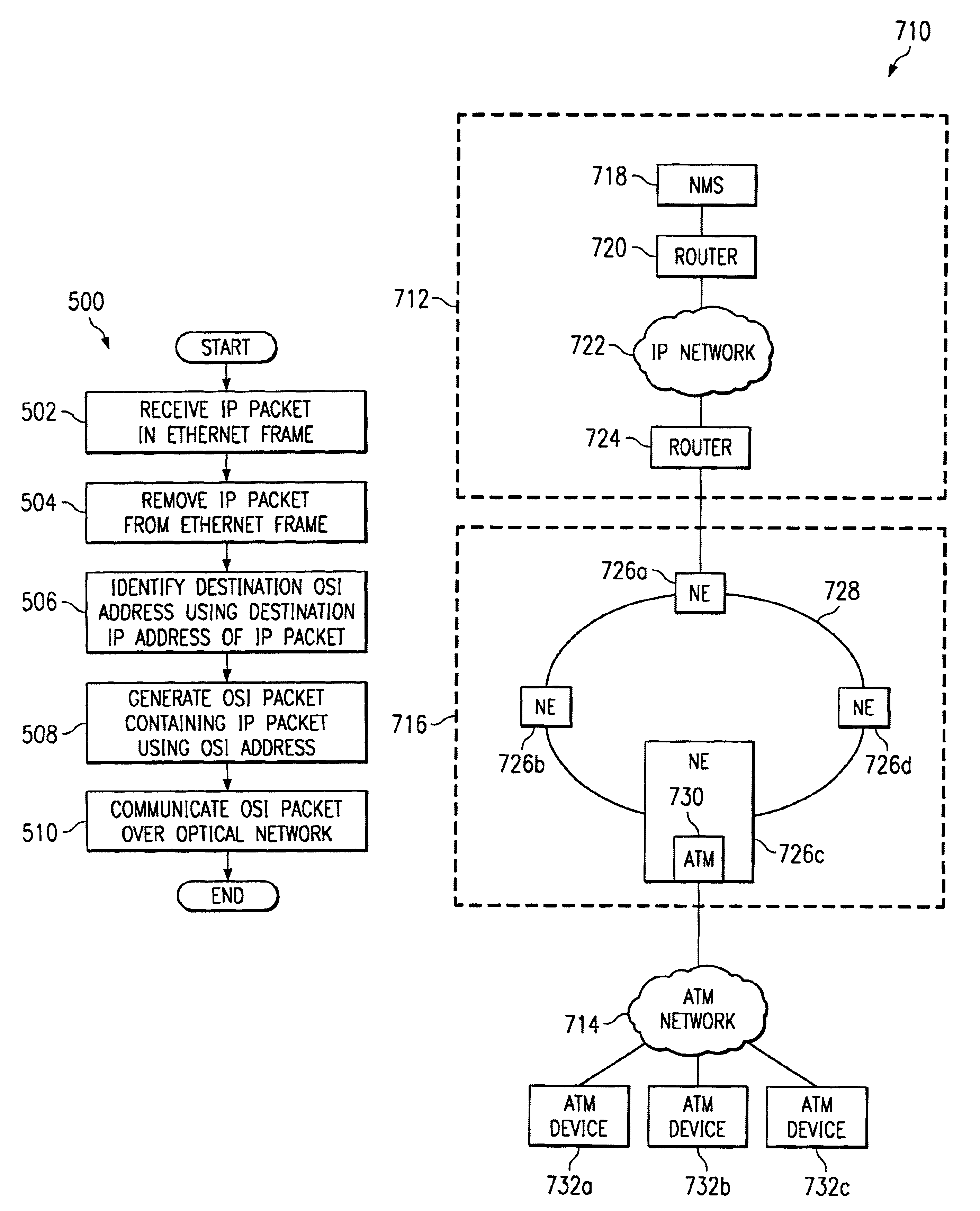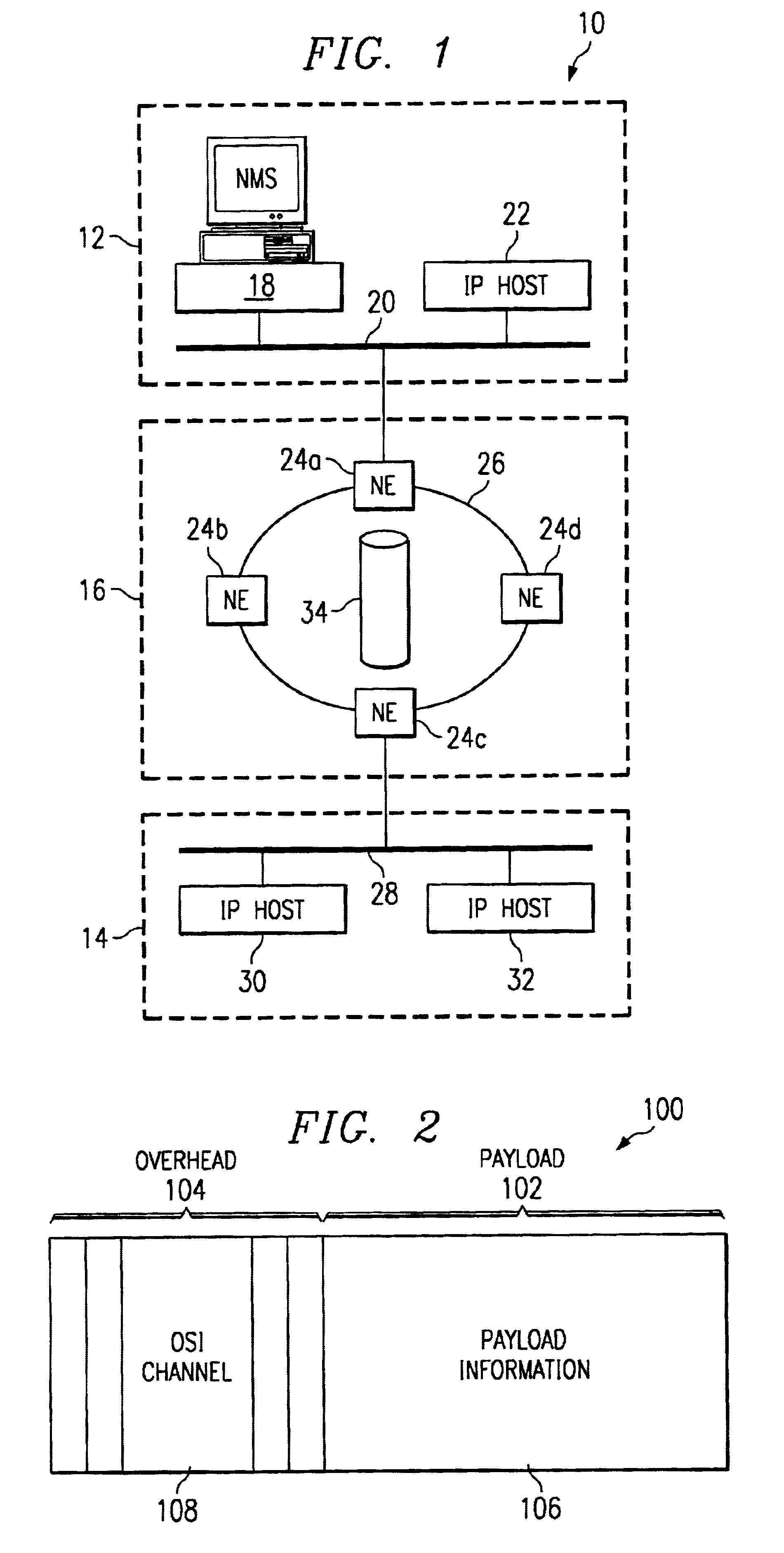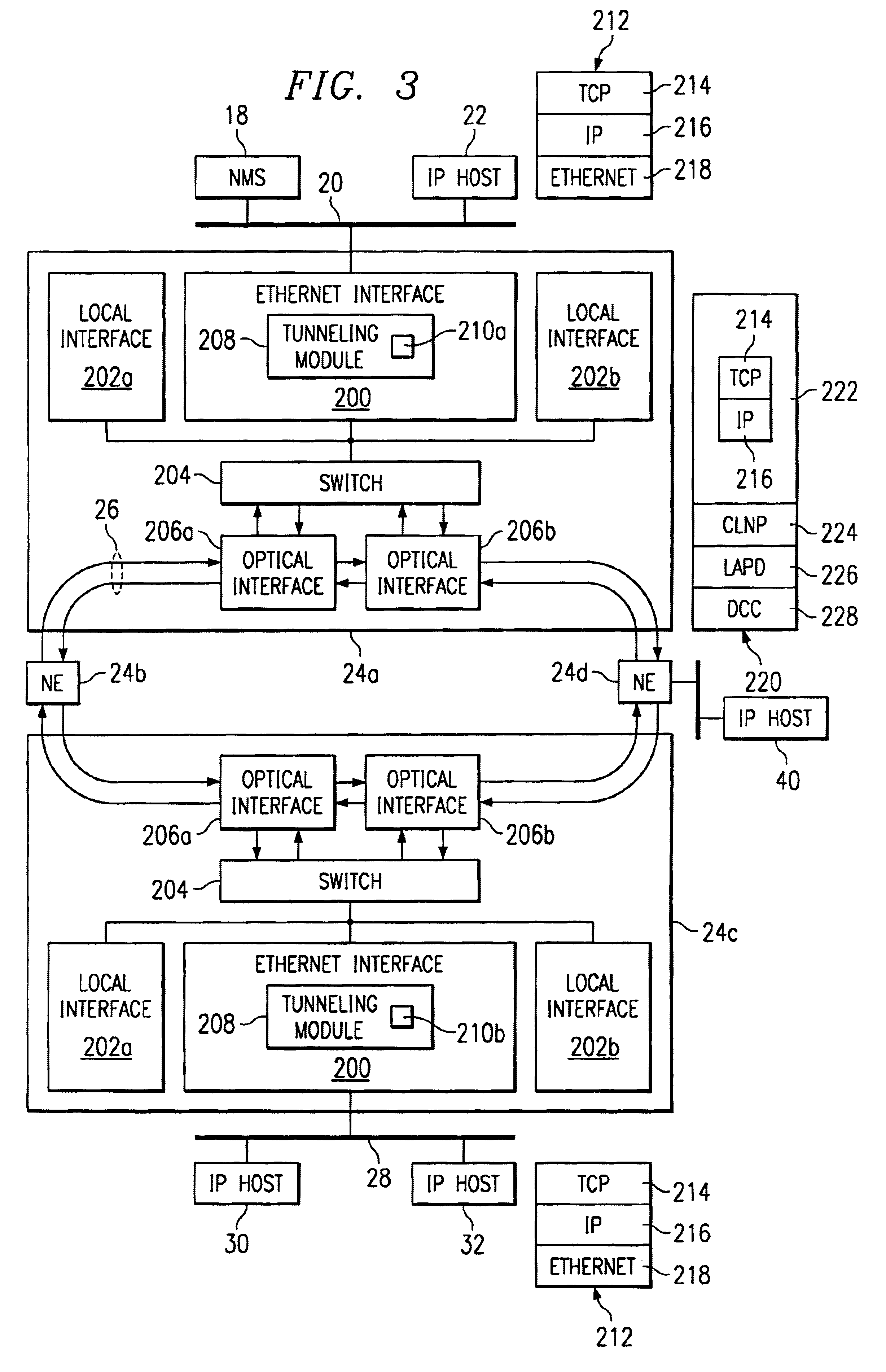Method and system for transporting packet-switched control traffic in an optical network
- Summary
- Abstract
- Description
- Claims
- Application Information
AI Technical Summary
Benefits of technology
Problems solved by technology
Method used
Image
Examples
Embodiment Construction
FIG. 1 is a block diagram illustrating a communications system 10 for transporting packet-switched traffic in an optical network 16 in accordance with one embodiment of the invention. In the illustrated embodiment, system 10 includes a first packet-switched network 12, a second packet-switched network 14, and an optical network 16. Other embodiments of system 10 may be used without departing from the scope of the present invention.
In one aspect of operation, optical network 16 includes a plurality of network elements (NE) 24 arranged in a ring. In one embodiment, optical network 16 comprises a Synchronous Optical Network (SONET) ring. In this embodiment, network elements 24 communicate using the SONET protocol suite, which includes the Open Systems Interconnection (OSI) protocol suite, and network elements 24 exchange SONET frames over communication links 26. First packet-switched network 12 and second packet-switched network 14 may use a packet-switched protocol, such as the Intern...
PUM
 Login to View More
Login to View More Abstract
Description
Claims
Application Information
 Login to View More
Login to View More - R&D
- Intellectual Property
- Life Sciences
- Materials
- Tech Scout
- Unparalleled Data Quality
- Higher Quality Content
- 60% Fewer Hallucinations
Browse by: Latest US Patents, China's latest patents, Technical Efficacy Thesaurus, Application Domain, Technology Topic, Popular Technical Reports.
© 2025 PatSnap. All rights reserved.Legal|Privacy policy|Modern Slavery Act Transparency Statement|Sitemap|About US| Contact US: help@patsnap.com



